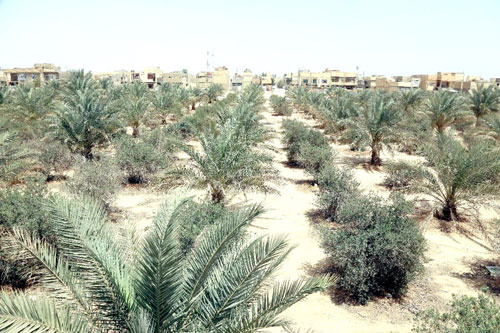Envisioned as a lush fortress against worsening desertification and sand storms, the “green belt” of Iraq’s Karbala stands as a wilted failure. Sixteen years after its inception, only a fraction of the 76-kilometre crescent-shaped strip of greenery has materialised, though the years proved a deep need for protection against mounting environmental challenges.
Eucalyptus, olive groves and date palms first took root in 2006 as part of a plan for tens of thousands of the trees to form a green protective shield around the city in central Iraq. “We were very happy because the green belt would be an effective bulwark against dust,” said Hatif Sabhan al-Khazali, a native of Karbala — one of Iraq’s Shiite holy cities that attracts millions of pilgrims every year.
Iraq’s host of environmental problems, including drought and desertification, threaten access to water and livelihoods across the country. But nowadays, the southern axis of Karbala’s green belt is only about 26 kilometres long while the northern axis of the 100-metre (328 feet) wide strip is even shorter, at 22 kilometres. Irrigation is sparse.—AFP










